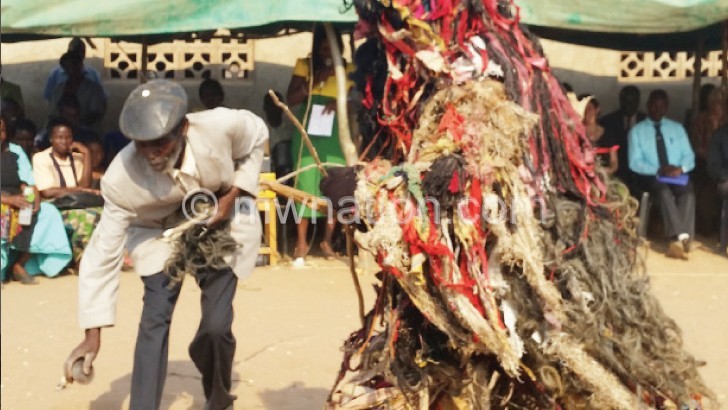Artist Kambalu’s moment of truth
It is not unusual to see blanket condemnation of the African way of life in artworks sponsored by Western agencies. But Elson Kambalu’s film takes a different route.
His Where ART Clinical Research film confronts one of the glaring many—the reasoning that ridicules a Malawian man as an irresponsible parent who leaves everything about caring for the sick to women—without perpetuating the demeaning stereotypes.
In the making of the documentary, the visual artist travels from the common picture of powerless women by the sickbed to the root of the gender disparities as researchers and agents of Western imperialism seldom do.
In the film, funded by Art in Global Health through Malawi-Liverpool Wellcome Trust, the visual artist encounters real-life stories of women in Chikhwawa who cannot imagine life in a different angle. They feel men’s reluctance to lend a hand is more about survival and group dynamics than selfishness.
“In most households, men are breadwinners. Who will bring food and money to the sick in the hospital and the children back home if we want men to spend all day by the sickbed?†wonders one of the interviewees.
This might vindicate Muted Voice Theories in which men heads of homes while women are domestic workers, cooks and caregivers.
However, it puts the roles in their real-life context and calls for concerted efforts towards women empowerment.Â
Unless both genders are in a position to contribute equally to family and social affairs, there will be no dramatic changes in the trends of participation in healthcare issues.
Malawi has a long road to get there.
Until such a desired time, at stake are the lives which depend on women for care and men for survival.
This is the tale of guitarist Jaco Jana who does not only end in the documentary on the wings of the soundtrack he co-plays with Agorosso, but also his life story.
Jana says his father and mother separated when he was still in the womb. The man went away to marry another woman, leaving the family in deep poverty. However, the situation worsened when she fell sick and died with nobody to tend to her or the family.
At six, the singer took over his sires’ roles and only reunited with his father in Lilongwe through his elder brothers—but life was no easier. His only solace was the sound of birds. At 12, he embraced art to wave off tears and loneliness.
“I learnt singing, painting and writing because I had a lot of burdens in my mind. I had to find something to learn to accept realities I couldn’t change,†says the guitarist.
He reckons apart from increasing investment in women empowerment, Malawians ought to be celebrating the strength of a woman much more than they currently do.
In fact, Where ART Clinical Research singles out the often underrated gender as the pillar and victims of Malawi’s society when it comes to health issues and research.
First, Kambalu pays homage to the creativity of 20 women who work with soils to tell stories about health through folk arts like the “Feel at Home†murals that welcome visitors in the Shire Valley districts of Chikhwawa.
Second, Kambalu singles out six hurdles they face in pursuit of health services: superstitious links between blood and witchcraft, gender beliefs which require them to get consent from men before they seek treatment, heavy language which denies the uneducated medical information, high illiteracy levels and poverty.
Â





